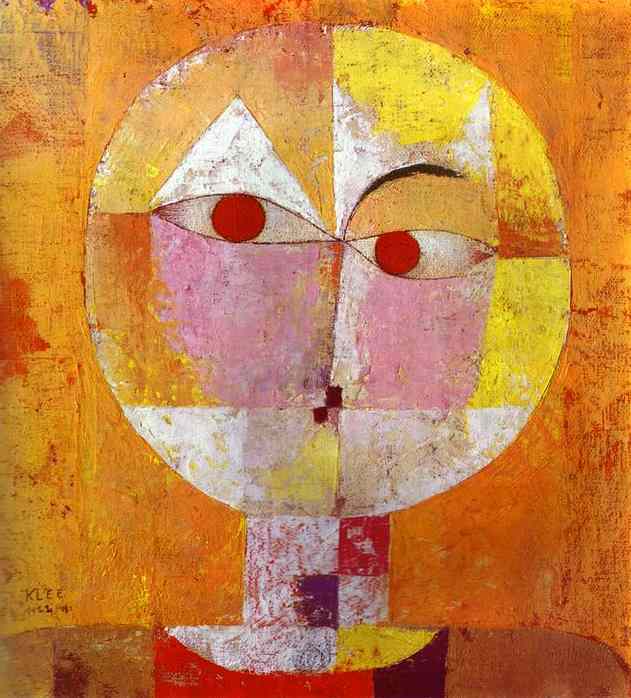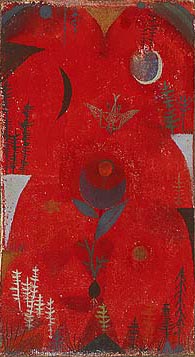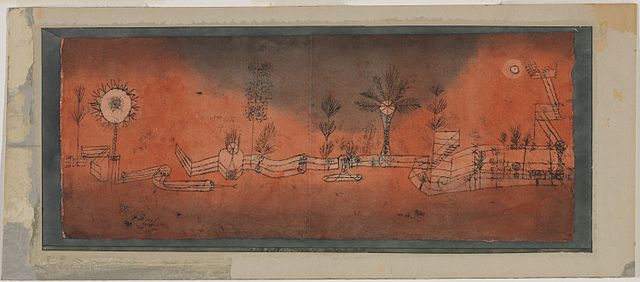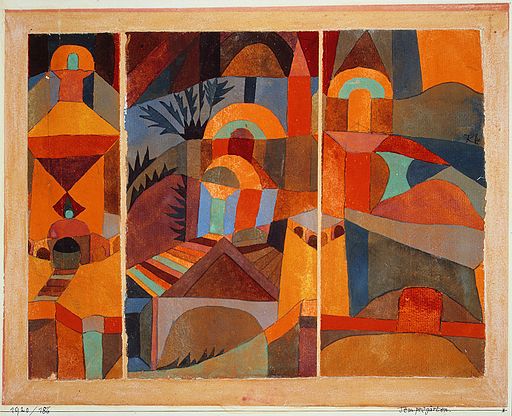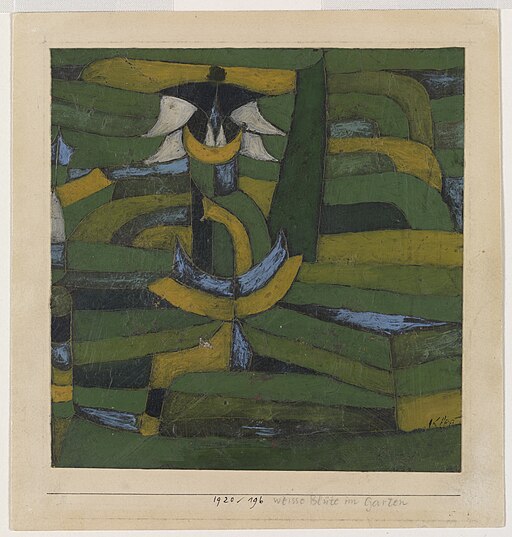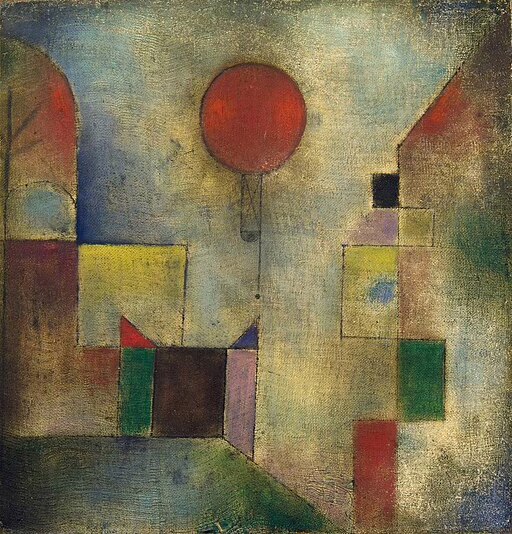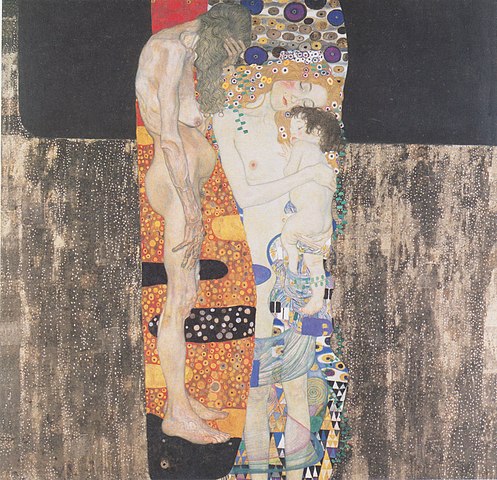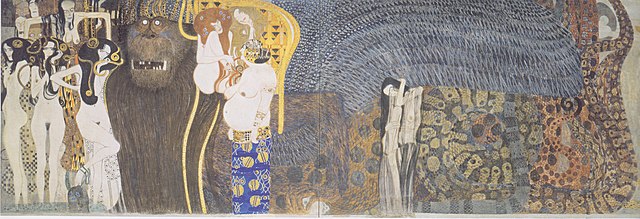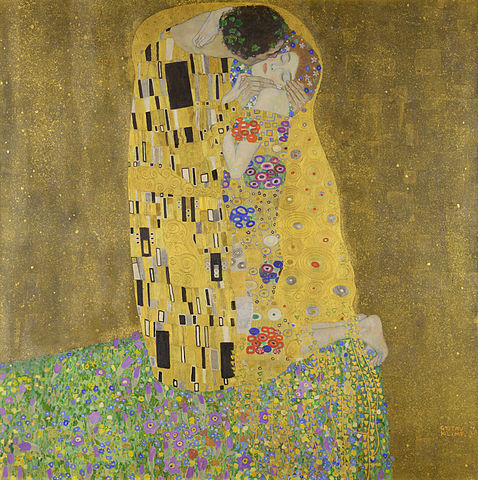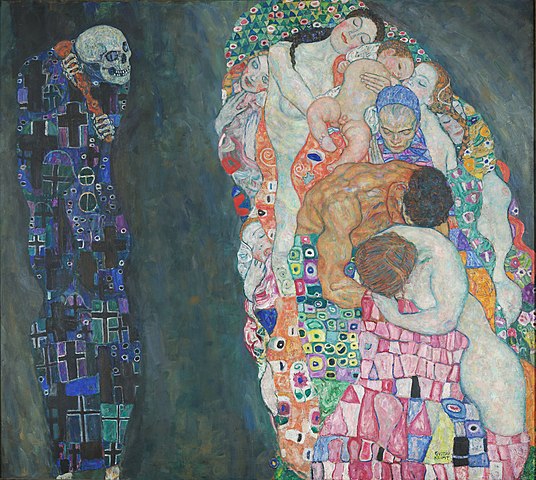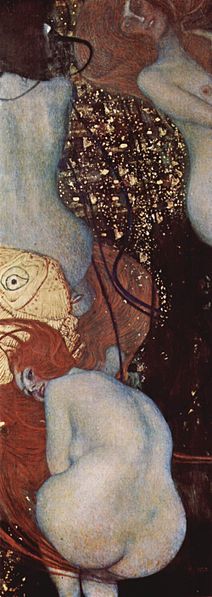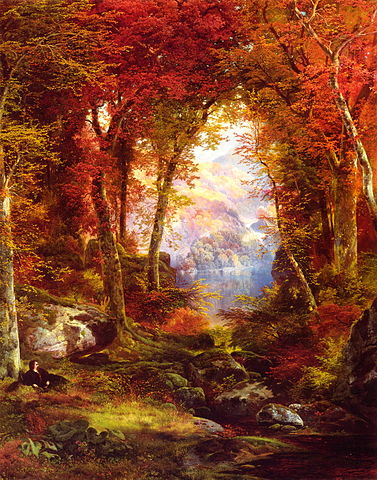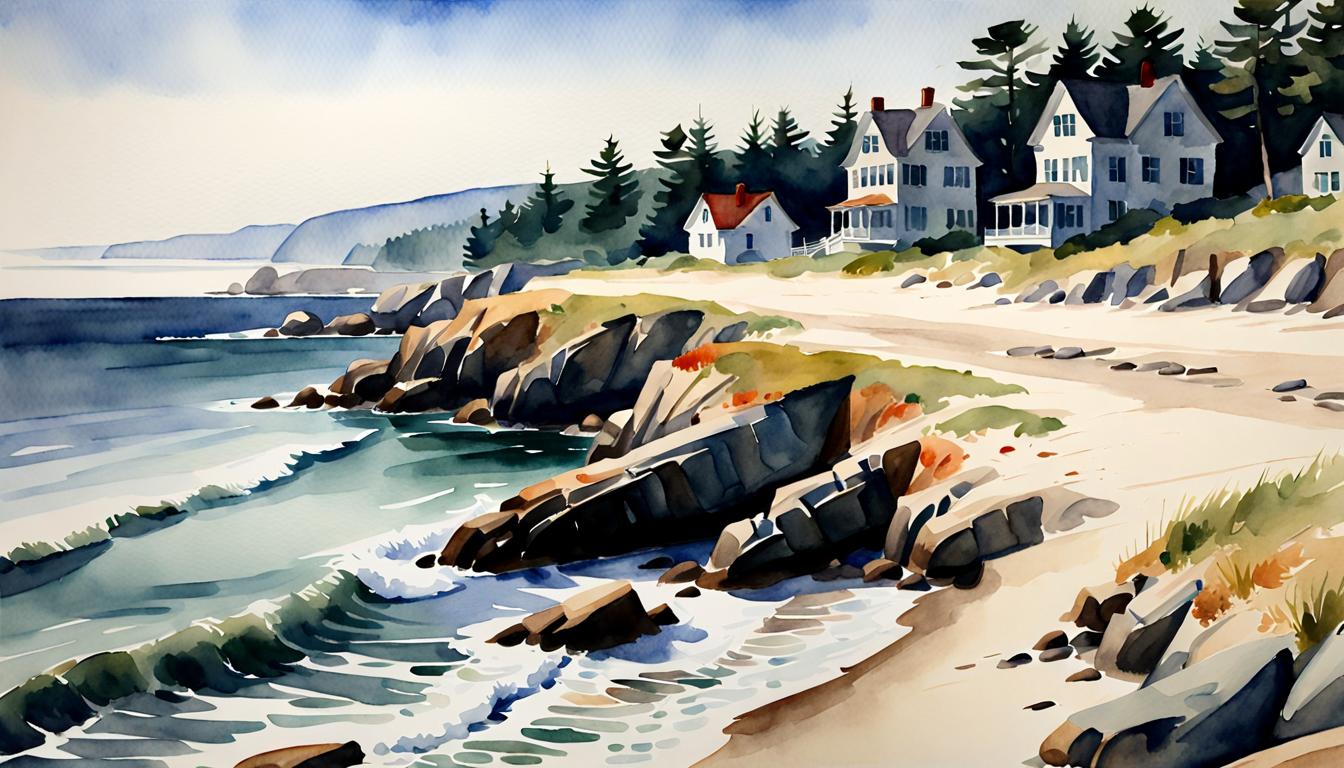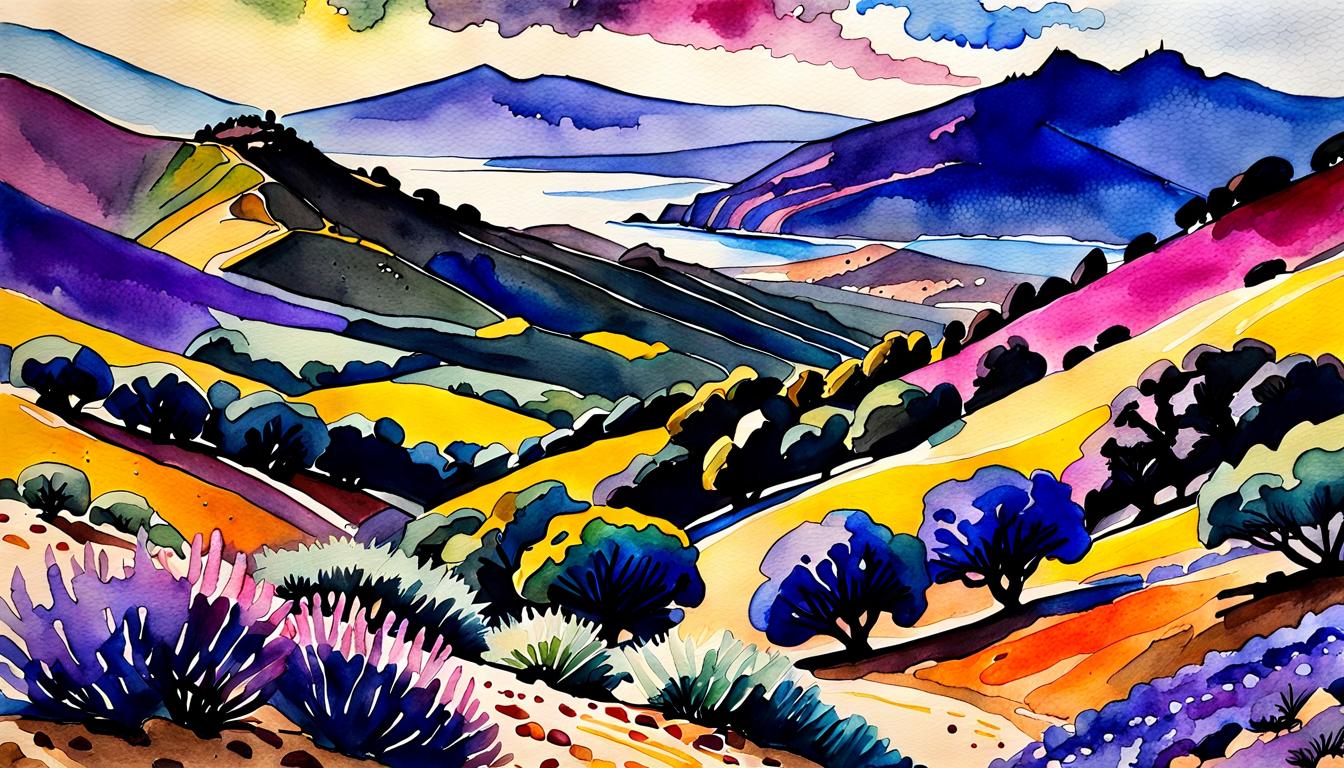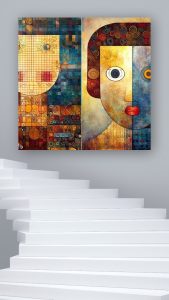
Paul Klee and Gustav Klimt were two influential artists who made significant contributions to the world of art. While both artists used watercolors in their work, their styles, techniques, and subject matter were quite different. In this article, we will explore the watercolor art of both Klee and Klimt, examining their unique approaches and the impact of their work on the art world in an artistic battle of Paul Klee vs Gustav Klimt.
Paul Klee
Paul Klee (1879-1940) was a Swiss-German artist known for his unique, abstract, and often childlike style. He was associated with various art movements, including Expressionism, Cubism, Futurism, Surrealism, and Abstraction. Klee’s watercolor paintings often featured simple stick figures, suspended fish, moon faces, eyes, arrows, and quilts of color. He was greatly influenced by the work of old masters such as Fra Angelico, and Michelangelo, and artists like Toulouse-Lautrec, van Gogh, and Cézanne.
Klee’s watercolor paintings often blurred the lines between abstract and representational art. For example, in his painting “Sailing Boats,” the viewer initially sees an assortment of shapes, but upon closer inspection, the shapes reveal themselves as hulls of boats and sails against a blue watercolor background. Klee’s watercolor art is known for its playful and experimental nature, often incorporating various techniques and materials.
Gustav Klimt
Gustav Klimt (1862-1918) was an Austrian Symbolist painter and a prominent member of the Vienna Art Nouveau (Vienna Secession) movement. Klimt’s primary subject was the female body, and his works are marked by frank eroticism. He was highly influenced by Austrian Art Nouveau artists, as well as elements of Asian and Byzantine art, and various mythologies and cultures.
Klimt’s watercolor paintings often featured intricate details, rich colors, and the use of gold and silver leaf. His work is characterized by a dramatic use of light, symbolism, and color, which he used to explore themes such as the subconscious and human desires. Some of Klimt’s most famous watercolor paintings include “The Kiss” and “The Park”.
Paul Klee vs Gustav Klimt – colors. and Impact
Klee’s Abstract Expressionism
Paul Klee’s Abstract Expressionism is characterized by its use of bold colors, geometric shapes, and playful lines. His paintings often feature surreal imagery and dreamlike symbolism. Klee was influenced by a variety of art movements, including Cubism, Expressionism, and Surrealism. He was also interested in the work of children and primitive cultures, and he often incorporated their art into his own work.
Klee’s Abstract Expressionist paintings are often described as “childlike” or “primitive.” However, this is not to say that they are simplistic or naive. Klee’s paintings are complex and sophisticated, and they often explore complex philosophical and psychological ideas.
One of the most distinctive features of Klee’s Abstract Expressionist paintings is his use of color. Klee was a master of color theory, and he used color to create a variety of moods and atmospheres in his paintings. He often used bright, saturated colors to create a sense of excitement or energy. However, he also used more muted colors to create a sense of calm or tranquility.
Klee’s use of geometric shapes is also distinctive. He often used simple geometric shapes, such as squares, circles, and triangles, to create his paintings. However, he also used more complex geometric shapes, such as spirals and stars. These geometric shapes often served as a framework for his paintings, but they also had symbolic meanings.
Klee’s Abstract Expressionist paintings are a unique and fascinating genre of art. They are full of color, imagination, and symbolism. They are a testament to Klee’s genius as an artist and his ability to create art that is both beautiful and thought-provoking.
Klimt’s Art Nouveau Style
Gustav Klimt’s Art Nouveau style is characterized by its use of flowing lines, organic forms, and rich colors. His paintings often feature female figures, symbols of nature, and religious imagery. Klimt was influenced by a variety of art movements, including Symbolism, Secessionism, and Art Nouveau. He was also interested in the work of Japanese artists, and he often incorporated Japanese motifs into his own work.
Klimt’s Art Nouveau paintings are often described as “decadent” or “luxurious.” This is due to their use of rich colors, gold leaf, and elaborate ornamentation. However, Klimt’s paintings are also complex and sophisticated, and they often explore complex philosophical and psychological ideas.
One of the most distinctive features of Klimt’s Art Nouveau paintings is his use of line. Klimt’s lines are often flowing and organic, and they often create a sense of movement and energy. He often used lines to create outlines of figures or objects, but he also used lines to create abstract patterns and textures.
Klimt’s use of color is also distinctive. He often used rich, saturated colors, such as gold, red, and blue. These colors often created a sense of opulence and luxury. However, Klimt also used more muted colors, such as pastels and earth tones. These colors often created a sense of calm and tranquility.
Klimt’s Art Nouveau paintings are a unique and fascinating genre of art. They are full of color, beauty, and symbolism. They are a testament to Klimt’s genius as an artist and his ability to create art that is both visually stunning and intellectually stimulating.
While both Klee and Klimt used watercolors in their work, their styles and subject matter were quite different. Klee’s watercolor art was more abstract and experimental, often incorporating simple shapes and figures to create playful and thought-provoking compositions. In contrast, Klimt’s watercolor paintings were more focused on the female form, featuring intricate details and rich colors to explore themes of desire and the subconscious.
Similarities between Klee and Klimt
Both Artists’ Use of Color
- Both Klee and Klimt were masters of color. They used color to create a variety of moods and atmospheres in their paintings.
- They both used bright, saturated colors to create a sense of excitement or energy.
- They also used more muted colors to create a sense of calm or tranquility.
- Both artists used color to symbolize different things. For example, Klee often used yellow to represent the sun, blue to represent the sky, and red to represent fire. Klimt often used gold to represent wealth, power, and luxury.
Both Artists’ Interest in the Spiritual
- Both Klee and Klimt were interested in the spiritual. They often used their art to explore religious and philosophical ideas.
- Klee was particularly interested in the idea of the subconscious mind. He believed that art could be used to explore the hidden depths of the human psyche.
- Klimt was interested in the idea of the divine. He believed that art could be used to express the beauty and mystery of the divine.
These similarities are evident in many of their paintings. For example, Klee’s painting “Twittering Machine” (1922) uses bright, saturated colors to create a sense of excitement and energy. The painting also features a variety of geometric shapes that symbolize different things. The yellow sun represents the conscious mind, the blue sky represents the subconscious mind, and the red fire represents the creative force.
Klimt’s painting “The Kiss” (1907-1908) also uses rich, saturated colors to create a sense of opulence and luxury. The painting features two figures embracing in a passionate kiss. The figures are surrounded by gold leaf and elaborate ornamentation, which symbolize wealth, power, and luxury.
These are just two examples of how Klee and Klimt used color and the spiritual in their art. Their work is full of symbolism and meaning, and it continues to inspire and fascinate viewers today.
Comparison of Famous Watercolor Paintings by Paul Klee and Gustav Klimt
| Artist | Title | Location | Description | Style |
|---|---|---|---|---|
| Paul Klee | The Bavarian Don Giovanni | Guggenheim Museum, New York | A watercolor painting with abstract shapes and colors | Abstract, Expressionism |
| Gustav Klimt | Judith and the Head of Holofernes | Österreichische Galerie Belvedere, Vienna | A painting depicting a biblical scene with a sensual and erotic touch | Symbolism, Art Nouveau |
Impact on the Art World
Despite their differences, both artists have had a lasting impact on the art world. Klee’s unique, abstract style has influenced countless artists and continues to be celebrated for its playful and experimental nature. Klimt’s sensual and symbolic watercolor paintings have also left a lasting impression, with his work remaining popular and highly sought after today.
In conclusion, who wins the battle of these great artists Paul Klee vs Gustav Klimt? Klee and Gustav Klimt were two influential artists who made significant contributions to the world of watercolor art. While their styles and subject matter differed, both artists have left a lasting impact on the art world, inspiring generations of artists and art enthusiasts alike.
